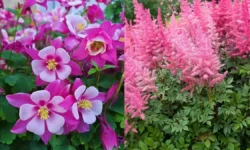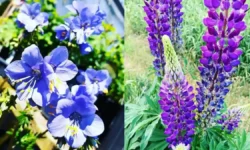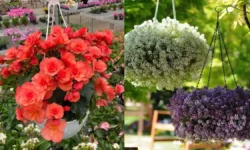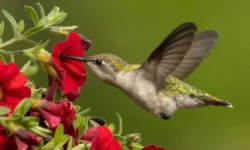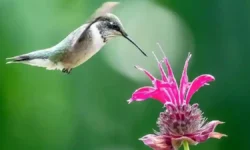Growing cucumbers is one of the joys of home gardening. Their crisp texture, refreshing flavor, and versatility in dishes make them a favorite for many. However, few things are more frustrating than watching your vibrant green cucumbers gradually turn yellow. This sudden discoloration raises concern, especially when it affects the harvest’s quality, taste, and appearance. So why is this happening?
Yellowing cucumbers can be the result of various environmental, nutritional, or biological factors. From overwatering to nutrient deficiencies and even pests or diseases, there are many underlying causes to consider. Understanding the specific reason your cucumbers are turning yellow is the first step toward effective intervention. In this comprehensive guide, we’ll explore every possible reason and walk you through proven solutions to bring your cucumber plants back to health.
Table of Contents
The Natural Lifecycle of Cucumbers and What Yellowing Indicates
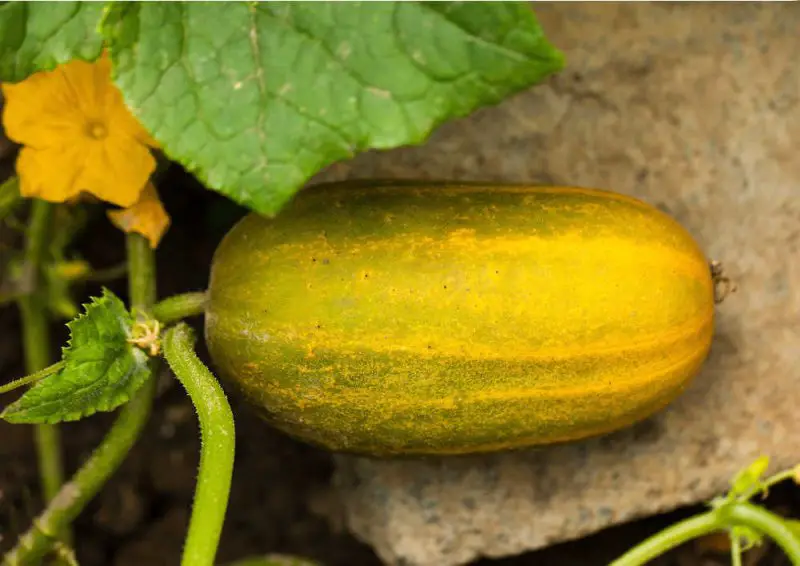
Before assuming the worst, it’s important to understand that cucumbers do have a natural maturing process. When left on the vine too long, cucumbers can start to yellow as they overripen. This is nature’s way of preparing the fruit for seed production. In this case, the yellowing is completely normal but signals that the cucumber is past its prime for eating.
However, if cucumbers begin to yellow while still small or immature, or if multiple fruits start to turn yellow simultaneously, it often points to a stress response. Plants signal that something is wrong by altering the color of their foliage or fruit. In cucumbers, yellowing can occur as a result of poor growing conditions, imbalance in care, or external threats.
Poor Pollination and Its Impact on Fruit Development
Pollination plays a crucial role in the development of healthy cucumbers. When female flowers aren’t adequately pollinated, the resulting fruit may start growing and then abruptly yellow and drop. This is commonly seen in gardens where bee activity is low or when plants are grown in greenhouses without manual pollination.
Incomplete pollination prevents the fruit from developing fully, and the plant may redirect its energy elsewhere, causing the small cucumber to yellow and shrivel. Wind, rain, or pesticide use can also reduce pollinator visits, which ultimately impacts fruit health. To fix this, gardeners often encourage bee-friendly flowers nearby or hand-pollinate the cucumber flowers using a soft brush.
Overwatering and Poor Drainage: A Leading Culprit
Cucumbers love consistent moisture but absolutely detest soggy soil. Overwatering is one of the most common reasons cucumbers turn yellow. When roots are constantly wet, they become oxygen-deprived and start to rot, impairing the plant’s ability to transport nutrients. As a result, the fruit begins to show signs of stress through discoloration.
Another factor that contributes to overwatering symptoms is poorly draining soil. Even if you’re watering moderately, compacted or clay-heavy soil that retains too much moisture can suffocate the roots. Raised beds, organic compost, and proper spacing between plants can help improve drainage and promote healthier growth.
Nutrient Deficiencies That Lead to Yellow Cucumbers
For cucumbers to thrive, they need a balanced supply of essential nutrients. A deficiency in nitrogen, potassium, or magnesium can result in poor plant health and yellowing fruit. Nitrogen, in particular, is vital for foliage and fruit development. If plants don’t receive enough, leaves may turn pale and fruits may yellow prematurely.
Potassium helps regulate water and carbohydrate transport, and without it, cucumbers may become soft and discolored. Magnesium, often overlooked, supports chlorophyll production. A shortage can manifest as interveinal yellowing of leaves and may affect fruit color indirectly. Addressing these issues with balanced fertilization and soil testing ensures your cucumbers stay green and vibrant.
Pest Infestations That Disrupt Healthy Growth
Several garden pests feed on cucumbers and contribute to yellowing through physical damage or disease transmission. Cucumber beetles, aphids, and whiteflies can suck sap from the plant, weakening its structure and reducing nutrient flow. Over time, the affected fruits become discolored and stunted.
Some insects, like aphids, also transmit viruses that cause yellow mosaic patterns on leaves and malformed fruit. Regular inspection of the plants and introducing beneficial insects like ladybugs or lacewings can keep these pests in check. Organic neem oil sprays and insecticidal soaps can also offer effective control when used responsibly.
Common Cucumber Diseases That Cause Yellowing
Several diseases can result in yellow cucumbers, often accompanied by additional symptoms like wilting, spotting, or mold. One of the most prominent diseases is cucumber mosaic virus, which causes mottled leaves and distorted fruit. This virus is often spread by aphids and can persist in the soil or neighboring plants.
Fusarium wilt, a soil-borne fungal disease, can also cause yellowing and wilting. It typically begins with lower leaves and spreads upward, leading to plant collapse. Powdery mildew and downy mildew are also frequent culprits, particularly in humid conditions, and they weaken the plant by reducing photosynthesis.
To combat diseases effectively, early identification is key. Removing infected plant parts, rotating crops annually, and avoiding overhead watering can limit the spread. Fungicidal treatments and disease-resistant cucumber varieties further increase your odds of success.
Sunlight and Temperature Stress Affecting Fruit Quality
Cucumbers require full sun for at least six to eight hours daily. When plants don’t receive enough light, they struggle to photosynthesize efficiently. This results in slow growth, pale foliage, and off-colored fruits, including yellow cucumbers. Shade from nearby plants, fencing, or buildings can interfere with proper sun exposure.
In addition to light, cucumbers are sensitive to extreme temperature fluctuations. Prolonged exposure to temperatures below 55°F (13°C) or above 90°F (32°C) can stress the plant. Heat stress, in particular, may lead to bitter or yellow fruit. Using shade cloth during hot afternoons or row covers in early spring can help mitigate these challenges.
Harvest Timing and Its Influence on Fruit Color
Leaving cucumbers on the vine for too long causes them to change color as they mature. An overripe cucumber will often turn yellow, develop a tougher skin, and contain larger seeds. While not harmful, these cucumbers typically lose their flavor and crunch, making them less desirable for fresh consumption.
Monitoring your plants daily and harvesting when fruits reach the ideal size prevents this problem. For slicing varieties, this might be when cucumbers are 6–8 inches long. Pickling varieties are usually harvested at 3–4 inches. Prompt harvest encourages the plant to produce more fruit and helps maintain overall health.
Soil Imbalance and pH Levels That Disrupt Nutrient Uptake
Even when nutrients are present in the soil, an imbalance in pH levels can limit the plant’s ability to absorb them. Cucumbers prefer slightly acidic to neutral soil with a pH between 6.0 and 7.0. Outside this range, certain nutrients become less available, leading to deficiency symptoms despite regular fertilization.
For example, in alkaline soils, iron and manganese become harder for plants to uptake, resulting in interveinal yellowing and poor fruit development. Acidic conditions, on the other hand, can lead to phosphorus lockout. Testing your soil with a simple pH meter or kit can provide vital insights and guide appropriate amendments.
Container Gardening Challenges That Cause Yellow Cucumbers
Growing cucumbers in containers can be incredibly rewarding, but it also presents unique challenges. Containers dry out more quickly than in-ground beds and can experience rapid nutrient depletion. If not watered consistently or fertilized regularly, container cucumbers may begin to yellow due to stress.
Additionally, container plants are more susceptible to temperature extremes and root crowding. If the roots outgrow their pot, nutrient and water absorption decline. Choosing a large container with drainage holes and using quality potting mix can reduce these issues. Regular feeding with a diluted liquid fertilizer keeps nutrients in check.
Environmental Pollution and Chemical Exposure
Sometimes, yellowing can be traced to chemical exposure. Herbicide drift from nearby lawn care or agricultural activities can damage sensitive cucumber plants. Even small amounts of weed killer carried by wind can cause distorted growth and yellowing.
Contaminated water or soil, especially near industrial or urban areas, may also carry heavy metals or residues that interfere with healthy development. Using rainwater or filtered sources for irrigation and ensuring your garden is free from chemical runoff helps protect your crops from unintended harm.
Practical Tips to Revive Yellowing Cucumbers
Restoring the vibrant green of your cucumber plants begins with a close inspection. Check the soil moisture, examine the leaves and fruit for pests or mold, and assess the sun exposure throughout the day. Addressing the root cause—whether it’s waterlogged roots, missing nutrients, or low pollinator presence—yields the best results.
Improving airflow around the plants by proper spacing can reduce fungal risk. Mulching helps maintain soil temperature and moisture, while pruning excess foliage lets more sunlight reach the fruit. With careful attention and timely corrections, most yellowing issues can be reversed or mitigated for future growth cycles.
The Importance of Crop Rotation and Healthy Garden Practices
One of the best ways to prevent recurring cucumber problems is to practice crop rotation. Planting cucumbers in the same soil year after year allows pests and diseases to build up. Rotating them with unrelated crops like legumes or leafy greens disrupts pest cycles and restores soil health.
Incorporating compost and organic matter enriches the soil and improves its structure, making nutrients more available. Companion planting with flowers like marigolds or herbs like dill can attract beneficial insects and deter harmful ones. A healthy ecosystem around your cucumber plants is your best defense against yellowing and decline.
FAQs About Yellow Cucumbers
Why do my cucumbers turn yellow and stop growing?
This often happens due to incomplete pollination or nutrient deficiency. The plant begins the fruiting process but cannot support full development, resulting in stunted yellow cucumbers.
Can I still eat yellow cucumbers?
If the yellowing is due to overripeness, the cucumber may still be edible but with altered taste and texture. If it’s caused by disease or pests, it’s better to discard it.
How often should I water my cucumbers?
Water cucumbers deeply once or twice a week, allowing the top inch of soil to dry between waterings. Overwatering or inconsistent watering can lead to yellowing.
What fertilizer should I use to prevent yellow cucumbers?
A balanced fertilizer with equal parts nitrogen, phosphorus, and potassium (such as 10-10-10) works well. Supplement with magnesium or iron if deficiencies are detected.
Do yellow cucumbers mean my plant is dying?
Not necessarily. Yellowing can be a temporary stress response. With proper adjustments to care, most plants can recover and continue producing healthy cucumbers.
Conclusion: Understanding and Solving Yellow Cucumbers
Cucumbers turning yellow is not a rare occurrence, and in most cases, the underlying cause can be identified with careful observation and a bit of detective work. Whether the issue lies in pollination, watering, nutrients, or disease, timely action can help salvage your current crop and improve future yields.
Consistency is key in cucumber care. Plants respond best when conditions remain stable and balanced. By recognizing early warning signs and understanding how various stressors affect fruit development, you can take targeted steps to restore plant health. Yellow cucumbers don’t mean failure—they simply mean your garden is sending you a message, and now you know how to respond.

